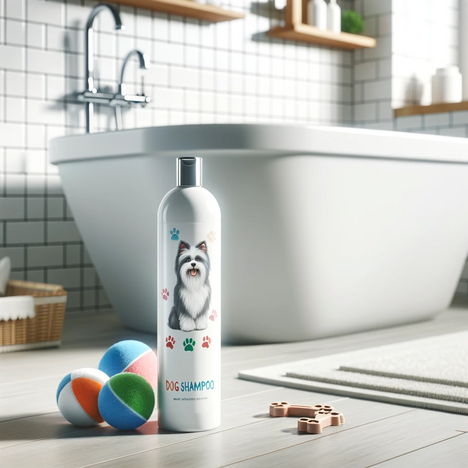Phenoxyethanol

In modern dog grooming, innovation and safety often come together, with the health of our four-legged friends always at the forefront. One ingredient that has recently attracted attention is phenoxyethanol. This preservative can be found in a variety of products, from human cosmetics to pet care products. But what does the presence of phenoxyethanol in products we use on our dogs really mean? This article aims to provide a comprehensive understanding of phenoxyethanol and its potential benefits and drawbacks for dogs.
What is phenoxyethanol?
Phenoxyethanol is an ethereal glycol that is used as a preservative in many cosmetic and pharmaceutical products. Its main function is to inhibit the growth of bacteria and fungi, thus extending the shelf life of products. Due to its relatively low toxicity and effectiveness at low concentrations, phenoxyethanol is often considered a safe preservative for cosmetics and skin care products. It is found in wet wipes, shampoos, lotions and even some dog grooming products.
The effect of phenoxyethanol on dogs
The debate about phenoxyethanol and its effects on dogs is split, ranging from concerns about its safety to its role as a necessary evil in the preservation of grooming products.
Benefits: A necessary protection?
- Inhibiting microbial growth: By inhibiting the growth of bacteria and fungi in products, phenoxyethanol can help ensure the safety and efficacy of dog grooming products.
- Extended shelf life: The use of phenoxyethanol in grooming products extends their shelf life, ensuring that the products can be used safely for a longer period of time.
Disadvantages: Potential risks
- Skin irritation: In some dogs, the use of products containing phenoxyethanol may cause skin irritation or allergic reactions, especially with prolonged or frequent use.
- Toxicity risks: Although phenoxyethanol is considered safe at low concentrations, higher doses or accidental ingestion, especially in small breeds of dogs or puppies, can have toxic effects.
- Long-term effects: The long-term effects of regular exposure to phenoxyethanol have not been fully researched, raising concerns about potential health problems.
Safety measures and alternatives
For dog owners concerned about the use of phenoxyethanol in dog grooming products, there are some steps that can be taken to minimize the risk:
- Product selection: Look for products with natural preservatives or those specifically labeled as phenoxyethanol free.
- Careful application: Avoid frequent use of products containing phenoxyethanol, especially on areas with thin or damaged skin.
- Observation: Watch for signs of skin irritation or allergic reactions in your dog after using new grooming products.
Conscious handling is crucial
While phenoxyethanol plays its role as a preservative in dog grooming and offers certain benefits, it is essential to recognize the potential risks and take appropriate precautions. The decision to use products containing phenoxyethanol should be based on a conscious consideration of the pros and cons, taking into account the specific needs and health of your own dog. Ultimately, it is the responsibility of each dog owner to choose the safest and most compatible grooming products to ensure the well-being of their four-legged friend.
If you notice any signs of hypersensitivity or poisoning in your dog, you should see your vet immediately. We are not a substitute for a vet, but we try to be as accurate as possible. Every dog reacts differently and we recommend you get a second opinion or consult your vet if in doubt.
Stay healthy and take good care of your four-legged friend!😊